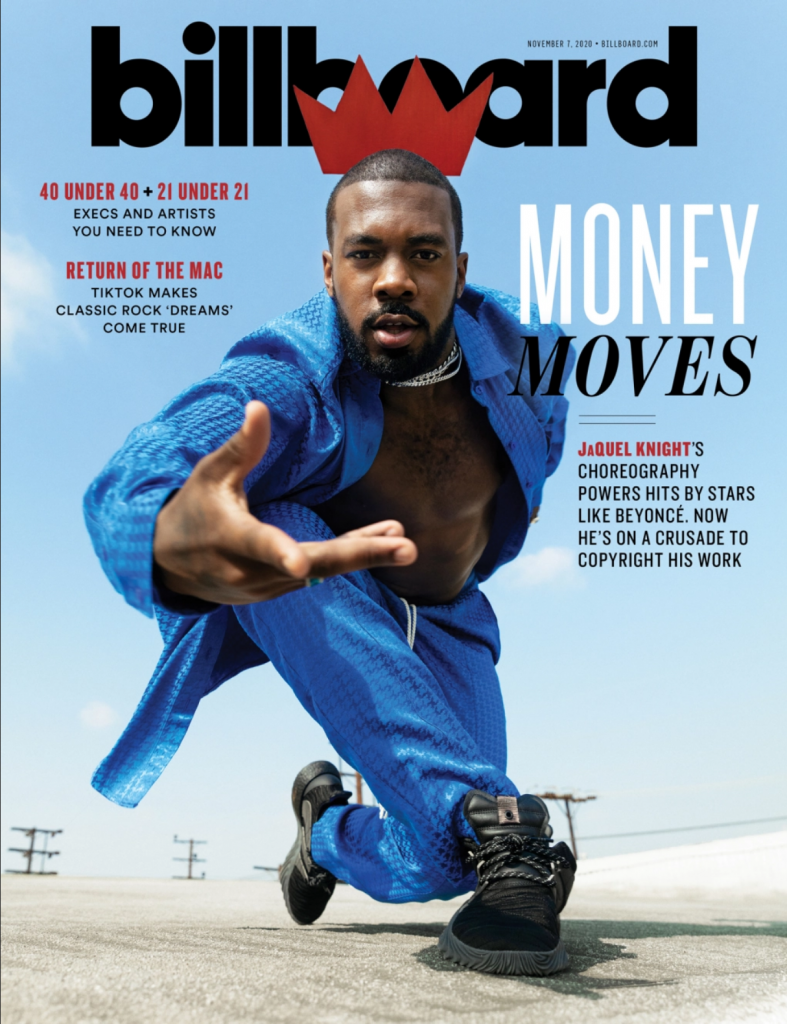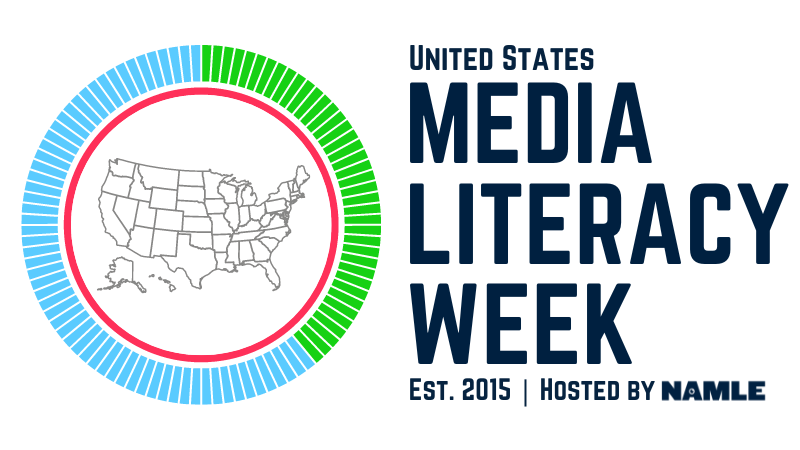Welcome to Media Literacy @ the College of Media (and Beyond), and we’re glad to get started by wishing you a happy Media Literacy Week! Since 2015, the National Association for Media Literacy Education has coordinated this weeklong celebration of media literacy. Check out the MLW “Participate” page for a range of opportunities to come on board, from liking and sharing on social media, to creating your own media literacy content. Be sure to head over to the “Events” page for even more interesting goings-on, from a discussion of digital media literacy and youth mental health, to a conversation on book banning in schools brought to you by PEN America. You can find even more at NAMLE’s own website–while you’re there, don’t forget to meet the media monsters (so very cute, but so very scary, especially when they look like us–let us know in the comments which monster/s you recognize among your family and friends, and maybe in the mirror!)
…and then when you’ve recovered from your encounter with the monsters, come back here to learn about some of the media literacy happenings at the College of Media (and beyond)–starting with a week of posts for MLW….
MLW Friday / Media Matters eText
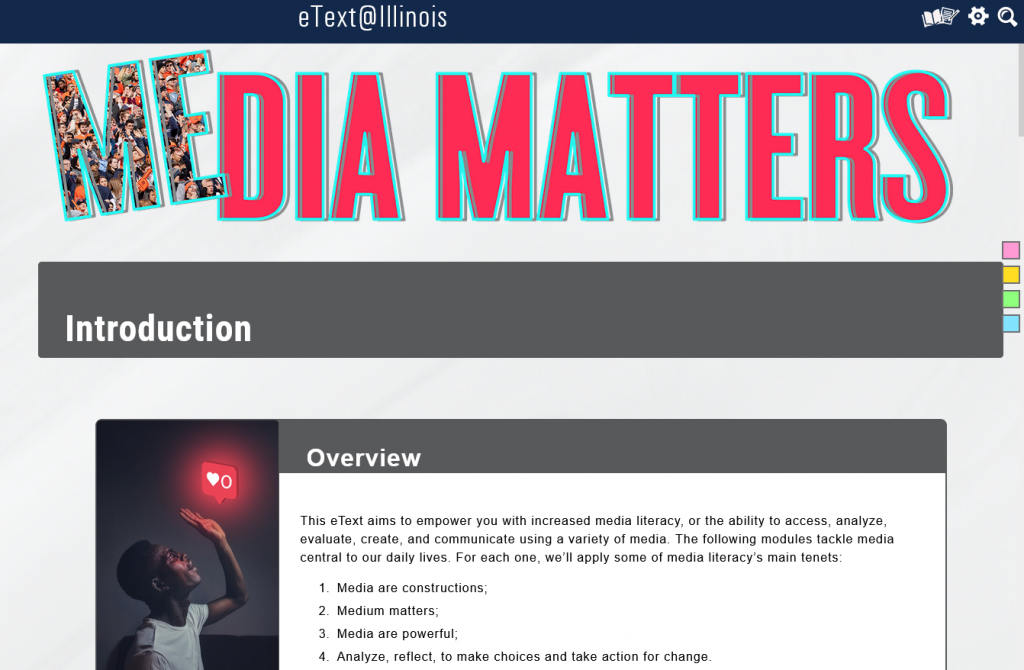
If you study or teach “media,” you’ve probably had those moments when people ask what exactly it is that you do. If you’ve been in the field for a while, you’ve come to your own answers to that question: “My research and teaching are about [x]”; “When I grow up I want to do [y].” But it’s an interesting question in itself, and then also just for the fact that people are always asking (I’m guessing that electrical engineers don’t get that question…).
Obviously it doesn’t cover everything that happens in the College of Media, but the Media Matters eText puts a nice umbrella over a lot of the things that we do (free from a university authenticated device). The eText was written by some (familiar) professors across the college: Amanda Ciafone (MACS), CL Cole (MACS), Stephanie Craft (JOUR), and Michelle Nelson (ADV). It’s broken into four parts, on “The Attention Economy”; “Algorithmic Literacy”; “News Literacy”; and “Making Sense of Political Ads.” Though there’s a strong focus on media literacy throughout, it covers a lot of ground. It’s really fun to skim and browse, with lots of activities, tools, secrets, and mysteries (like “What Happened to Choco Tacos?”) But for a quick and dirty version, you can skip to the twenty-question Final Quiz … and then maybe go back and catch up on what you missed.
Happy US Media Literacy Week 2022, and enjoy the weekend!
MLW Thursday / Denise Bielby on Roger Ebert in Journal of Popular Culture
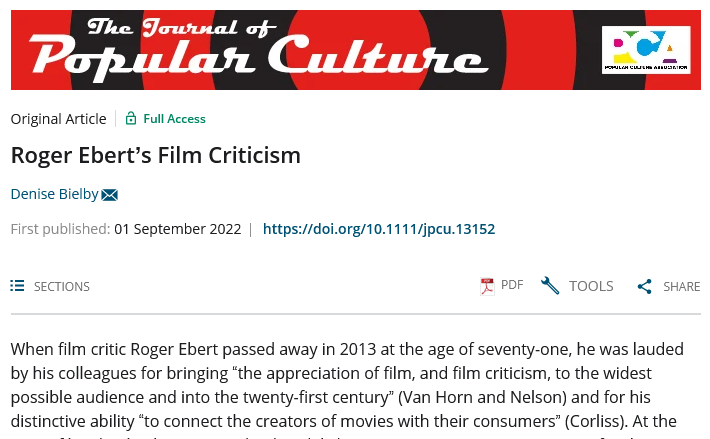
Denise Bielby rules! If you’ve taken MACS320, you may have heard about her classic “‘All Hits Are Flukes’” (with William Bielby; free from a university authenticated device). The article shows how decision-making in television program development doesn’t follow from free-market forces (already a good point of media literacy); rather, gatekeepers practice defensible decisionmaking (“CYA”), drawing on concerningly conservative factors like imitation, reputation, and genre. A lot of Bielby’s work emphasizes the complexity and consequence of cultural intermediation (another good point of media literacy)—from gatekeepers like television development executives, to talent agents and media critics.
In the most recent issue of the Journal of Popular Culture, Bielby considers the film criticism of our very own Roger Ebert (BS, Journalism, 1964). Part of the fun of Bielby’s sociology of culture lies in grasping that complexity and consequence, in what we might otherwise take for granted. We know that Ebert’s criticism builds bridges between elite and popular orientations toward film culture; but Bielby brings that point to new life in close readings of some of his reviews. Alongside her own insight, the article gives a nice reminder of Ebert’s critical voice; in case you missed the complexity, consequence, and flavor of his work, check out “Roger Ebert’s Film Criticism” at the JPC (free from a university authenticated device)—and then the 2022 Roger Ebert Lecture tomorrow night (10/28), as well as the ongoing goings-on at our Roger Ebert Center for Film Studies!
MLW Wednesday / Political Advertising Literacy Research Group
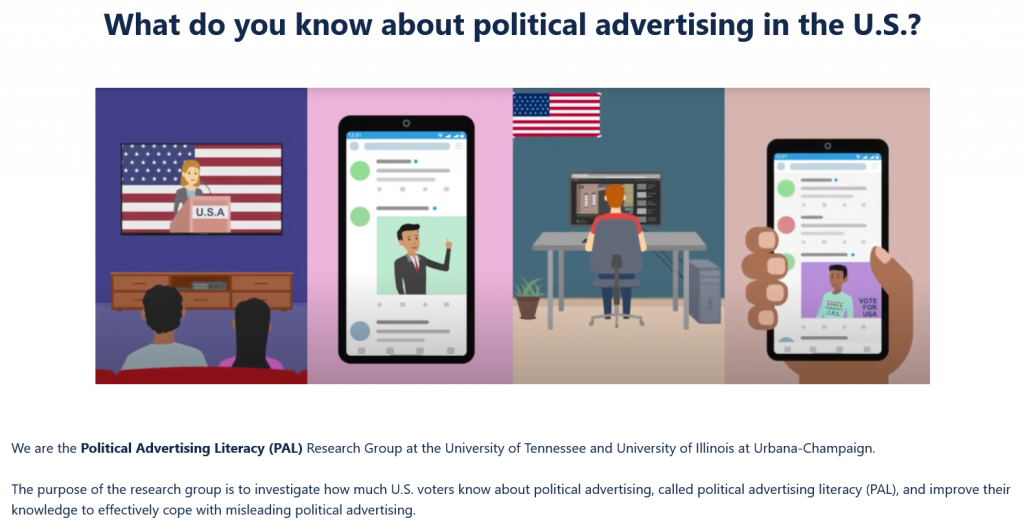
If you’re coming from any of our social media posts, you were promised the opportunity to take a ride with the Political Advertising Literacy Research Group, and see how well you know your way around the neighborhood. Like it says on the tin, PALRG is a group researching political advertising literacy, comprising University of Tennessee Knoxville professor Eric Haley, our own professors Chong-Dae Ham and Michelle Nelson (both from ADV), and our own advertising graduate students Kirby Cook and Veranika Paltaratskaya. And here’s the quiz they put together (it’s true/false, with shorter and longer versions on the same page); you can take a few minutes, see how you did, and then come back and learn more….
If you didn’t ace the quiz, don’t feel bad; as the title of one recent publication from the group puts it, “What Do We Know About Political Advertising? Not Much!” (free from a university authenticated device). The work in that article goes to one side of the group’s purpose, “to investigate how much U.S. voters know about political advertising,” or “political advertising literacy.” Along with publication in academic journals, the group has also reached wider audiences with these investigations—notably including a great piece in Forbes.
The other side of the group’s purpose is to “improve [voter] knowledge to effectively cope with misleading political advertising,” and here especially, the group has worked to translate scholarship into the sphere of public conversations. Be sure to check out the Resources page for a lot of neat materials (ready for the classroom, if you’ve got one). One of my own favorites is this short video on the STIR formula (before you fall victim to and/or spread disinformation: Stop, Think, Investigate, React)—with the helpful reminder that “there are more guarantees that an ad for a cheeseburger is truthful and non-misleading than an ad for a presidential candidate.”
If there’s room for improvement in your own knowledge, feel free to take your first quiz as a pre-test; check out those resources, and look forward to better luck next time!
MLW Tuesday / UIUC IMEDIA project
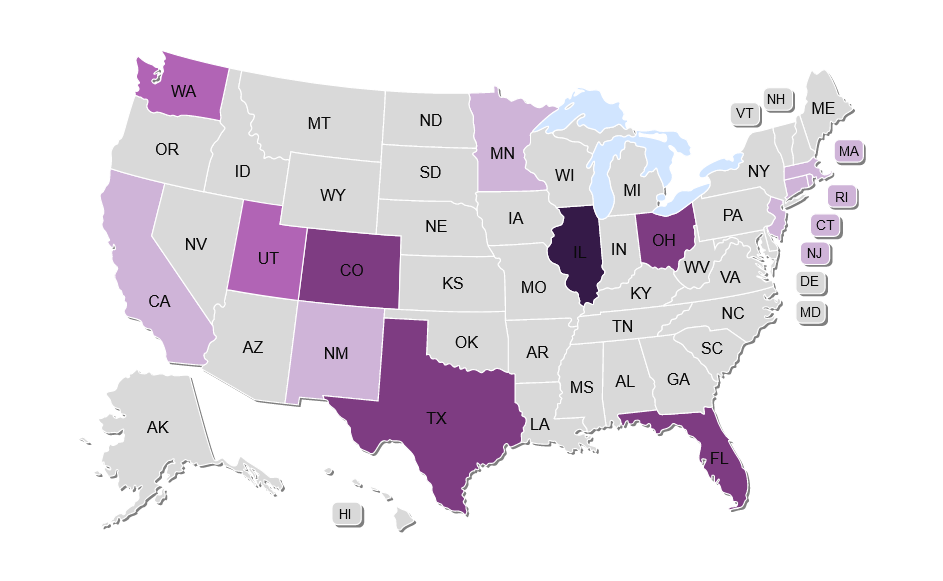
Apologies for any scares—after the last couple years, we may have learned that it’s bad news to see our state in the darkest shade on the map. But this is good news! The map comes from Media Literacy now, and our deep purple is a #1 ranking: “Leader in requiring media literacy education in classrooms.” In 2021, the state legislature passed Public Act 102-0055, requiring public school students to take a unit of instruction on media literacy, defined as “the ability to access, analyze, evaluate, create, and communicate” across a range of media.
The new requirement offers challenges as well as opportunities; though the media literacy movement has been around for a while, over which time it’s built up a big storehouse of resources, there’s a lot of thought and work that goes into developing and implementing new things in the classroom. The Initiative for Media Education Inquiry and Action (IMEDIA) was formed to support Illinois media literacy teachers, studying the current state of media education, and working with practitioners to help further develop media literacy in their classrooms going forward. In pursuing this goal, for example, IMEDIA offers a pioneering Summer workshop for high school media literacy teachers.
The Initiative is a member of the Illinois Media Coalition, and represents a partnership between the College of Education and the College of Media—including professors Amanda Ciafone (MACS), CL Cole (MACS), Stephanie Craft (JOUR), and Michelle Nelson (ADV), and Institute for Communication Research graduate student Sakshi Ballah. As one bottom line, along with the value of media literacy in the classroom in itself, there are lots of neat connections happening in and around IMEDIA. The whole discipline of education is built around connections between the academy and primary and secondary schools; one of the strengths of the College of Media lies in making connections between Gregory Hall and the world beyond—from local communities to professional fields (what happens in Gregory doesn’t stay in Gregory). As another bottom line, the new media literacy law might point to new career pathways for students in the College of Media—those who can, teach! (I think that’s how that one goes….)
MLW Monday / MACS166: Contemporary Media Literacy
Sometimes we’ll go digging for buried treasure, but sometimes the treasure’s sitting right there in the course catalog. MACS166: Contemporary Media Literacy was developed first by Professor CL Cole and then by Professor Amanda Ciafone, who’s currently teaching the course. Professor Ciafone was kind enough to share some quick thoughts about media literacy and the media literacy course:
How do you understand media literacy? What’s MACS166, and how does that fit in?
MACS 166: Contemporary Media Literacy introduces the theories and practices of media literacy to develop individual students’ knowledge and skills, equip them with the strategies to teach others, and consider strategies for larger social change.
In the course students analyze media by considering texts’ form and content, with special consideration to representation and strategies of persuasion. We learn a lot about the political economy of different media, thinking through the social relations and particularly power relations around their production, distribution, and consumption. We examine the role of technical systems and infrastructures. And we spend a significant amount of time reflecting on the role of media and technology in students’ lives and contemporary society.
We also make some media related to media literacy topics–we’ve done short videos, posters, TikToks, among others. In learning more about media through practice, we become more cognizant of media forms, technologies, and industries and consider the possibility of engaging publics through media.
Over the semester we have a more “meta” conversation examining media literacy as an approach to media education. As we experience media literacy lessons and interventions developed by scholars, organizations, and activists, we consider how they are put together. What are their goals? How do they get at their learning objectives? How effective are they? What are their limitations or potential consequences?
As we learn about the pedagogy of media education, students prepare their own media literacy projects and lessons in the major assignments of the semester.
What cool projects have you seen?
A central part of the course, and the pedagogical method of critical media literacy, is learning from each other in a dialogical recognition that we all come with certain knowledge, skills, and experience around media and technology, and we all can grow in these areas as well as others.
Students become teachers in the course, teaching me and each other what they know. They research and develop interactive lessons around media literacy topics of their own choice. The topics have been fascinating—web accessibility and universal design, the environmental impact of “frictionless” cryptocurrency, the use of humor in the alt right, protests by Black TikTok creatives over ownership, compensation, and equity … there are too many to name … and some of the lessons students develop have been remarkably insightful and engaging.
What’s your favorite part of teaching the course?
My favorite part of teaching this class is how much I learn from it. I enter each semester with some major themes and theories that provide the foundation for the class. But then it really is a joint exercise with students in building our collective media literacy.

